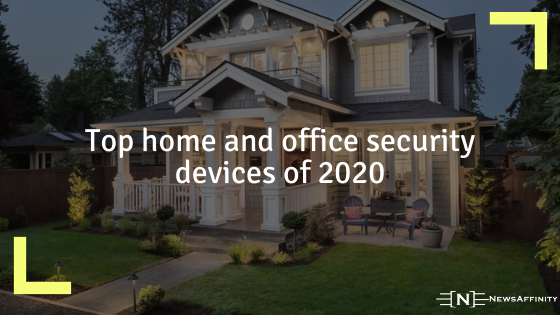With an estimated 1.5 million burglaries each year in the USA, the security of your home or business has never been more important. Losses from burglary totaled over $3.5 billion in the last year alone. In most cases, the perpetrators escape without conviction (police solve only 13% of break-ins due to lack of evidence or witnesses).
Thankfully improvements in technology are now offering progressively sophisticated solutions to the problem of break-ins and a vast array of security devices currently exist to protect your family or business from unwanted intruders.
From simple doorbell systems up to complex security systems offered by companies like Remsdaq, technology and Artificial Intelligence (AI) is playing an increasingly important role in the security of our homes and workplaces.
Security entry systems and smart locks
WiFi-enabled smart locks and apps are changing the face of entry security systems and offer unrivaled protection from intruders. While some older locks still operate with keypads and access codes, newer models can be programmed to allow access on a per-device basis, pairing with smartphone apps to allow automatic entry.
Should you need to remove access to someone for any reason, you can simply delete them from the authorized list and the lock will bar entry. Even the older, keypad models are relatively easy to change just by altering the access codes.
Video doorbell systems and apps are also growing in popularity, allowing you to see who’s at your door, no matter where you are.
Motion-detection cameras and alert systems
There’s nothing particularly new about motion-detection cameras, however, modern models are harnessing the power of the Internet of Things (IoT) to offer vastly improved security and alarm systems.
In essence, the IoT allows smart connected devices to communicate with one another. Using AI, these devices can then make decisions or perform actions autonomously, without the need for human intervention. For example, in the case of a motion-detection camera, once movement is sensed in a room, it might trigger a series of events in other devices such as sounding alarms, sending an alert video to a connected smartphone or automatically locking doors, etc. The IoT has vastly expanded the usefulness of security gadgets, letting them work together with AI to determine adequate responses.
Smart lights
Again, using the IoT, a range of devices can be interlinked to work together automatically. In the case of smart lighting devices, sensors can be put around your home or office to check when it’s light or dark and automatically switch on or switch off the lights.
Intelligent lighting systems are becoming more common in many workplaces to automatically detect when someone enters or leaves a room, thereby drastically reducing utility bills. Other common uses are automatically turning on the lights in your house, even when you’re not there, to give the illusion of someone being home.
Automatic blinds or curtains
Another growing security trick is the installation of automatic motorized blinds or curtains – again to give the illusion someone’s home. With over 70% of all burglaries happening when a house is empty, making an intruder believe someone is home is one of the best deterrents. Smart blinds or curtains can be programmed to work independently to open and close when it’s light or dark.
The IoT isn’t just being used for intruder security purposes. By connecting various devices around your home or workplace, you can also monitor temperature, humidity, sound, light and motion, giving you total peace of mind that everything’s okay while you’re out.
















Comments